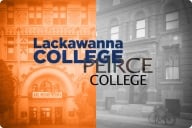You have /5 articles left.
Sign up for a free account or log in.
Forget campus appearances by President Obama and other politicians. A better sign that community colleges have arrived on the national scene may be their starring role in popular culture.
A television show, a recent Hollywood movie and two novels are set at community colleges. Even better, they all include a healthy dollop of satire. So instead of just mocking the sector as an academic backwater of last resort – long a tactic of comedians – these satirical looks laugh along with community colleges, saying in essence: “we kid, because we love.”
NBC’s “Community” is by far the most high-profile of the bunch. The situational comedy, which returned to the air two weeks ago after a three-month hiatus, features an ensemble cast centered on seven students in a study group. They range broadly in age, race and prior education.
One central character, Jeff Winger, is a 30-something lawyer who enrolled after being disbarred for fudging his academic credentials. While Jeff initially looks down at his fellow students, he gradually realizes that he is part of the group. That distinction, which drives home the fact that almost half of all students attend two-year colleges, separates "Community" from cheap shots on late-night T.V.
The show and novels also poke fun at common conventions at community colleges: turf battles between departments, overly ambitious administrators, underprepared students and relentless budget-cutting.
"We're broke," Craig Pelton, an administrator on "Community," said in an episode this month. "We now get 80 percent of our electricity from that apartment building across the street."
College Leadership Crisis: The Philip Dolly Affair (Rogue Phoenix Press), in particular, is filled with inside jokes. The novel parodies leadership programs for aspiring college presidents and what its authors see as an increasing corporatization of community colleges.
“The culture just seems to be saturated by strategic plans,” says Jeffrey Ross, an English instructor at Central Arizona College, who co-wrote the novel with Jann M. Contento, coordinator of student success programs at Estrella Mountain Community College. The book’s opening chapter first appeared as a Views piece on Inside Higher Ed.
By no means are these fictional forays the norm for pop culture views of college life. The media-consuming public is highly aspirational -- people want, or even expect, to be millionaires and send their kids to an elite college. And the residential, four-year campus continues to dominate on screen and page.
“Larry Crowne” tried to break that mold by setting a romantic comedy at a community college. However, the film, starring Tom Hanks as a student and Julia Roberts as a professor, was a critical bust. Roger Ebert wrote that “what it doesn’t have is a reason for existing.” Ouch.
Take Our Reader Survey
Help us be better. Tell us
what you like (and don't) about Inside Higher Ed.
Click here to participate.
But the filmmakers were trying to attract an older audience (maybe too old, critics said) and chose a community college for a setting. Two-year institutions are typically more diverse than fancy four-years, and more likely to enroll adult students. That makes them ideal settings for big, relatable casts of characters.
For example, “Community” student and wealthy retiree Pierce Hawthorne, played by a 68-year-old Chevy Chase, wouldn’t be plausible in a sitcom set at a traditional college. But he works in a Hollywood take on a community college.
The satirical novel Glorify Each Day, which centers on a part-time GED instructor at a fictional community college, channels the voices of students through the essays they submit in class. Its author, John Banks, formerly worked as director of adult basic education at Randolph Community College, located in North Carolina. He says he met plenty of interesting students and co-workers there and at other jobs he held at community colleges, but wasn’t able take advantage of the fiction fodder while working at Randolph.
“When I was still there I didn’t really have time to write a novel,” Banks says.
In addition to tapping into potential character range, some of the recent fictional depictions of community colleges play heavily on recession-related anxieties. Unemployment and career reinvention make for rich material, it seems.
“TV is really a mirror of American society,” says Betty K. Young, president of Houston Community College’s Coleman College for Health Sciences. Popular shows hit at hot-button issues, she says, pointing to “M*A*S*H” and its post-Vietnam anti-war sentiment, and “The Cosby Show” take on shifting racial politics of the '80s. Community college resonates today, in part because of the economic downturn.
“The group of characters on the show are very representative,” she says, because community college enrollment is “up among all demographics, including the middle class.”
Priority Registration on Primetime
Many community college leaders and faculty members were worried when they heard that network television would lampoon their slice of the academy. But people either forgot about the series or warmed to it, in part because it treats community colleges with affection. It doesn’t hurt that the show is relatively smart.
Young, however, says the initial fears were overblown. And she's not exactly a pushover when it comes to battling what she sees as unfair stereotypes about community colleges, having led a cross-country tour to take on Jay Leno for his frequent jokes about the brain power of community college students. But a program like "Community" is different, she said. "Anytime TV does a show about your industry, that's a good thing."
The show’s creators did their homework, and at times accurately portray real issues on community college campuses.
“Community” is set at the fictional Greendale Community College. But it’s loosely based on the experiences of Dan Harmon, the show’s creator, who attended Glendale Community College in Los Angeles County about seven years ago. Harmon enrolled to try to save a foundering relationship with his then-girlfriend. She was taking a dance class there so he followed her -- a common story in higher education.
"We're broke ... We now get 80 percent of our electricity from that apartment building across the street."
-- Craig Pelton, fictional community college administrator on "Community"
The relationship tanked, but Harmon has said that he grew to like his fellow students in a biology class study group, most of whom he would never have met among his fellow screenwriters. That experience eventually became the core gimmick for “Community.”
“Sometimes he just nails it,” says Sharyn Obsatz, a professor at Glendale, who teaches mass media and journalism. Obsatz says she related to a recent episode, in which a professor is having a breakthrough moment with his students sharing a deeply personal story, only to be interrupted by a student’s loudly ringing cell phone.
In its first season, the show parodied priority registration, an arcane issue for network T.V., but not for students at California community colleges. The system has turned away 200,000 students amid budget cuts, and some students go to great lengths to get a first shot at registering for classes. On “Community,” the campus dean held a paintball match on campus, with the last student standing getting priority registration.
Obsatz invited Harmon to come back to Glendale. He’s visited her class three times, sticking around well after class to talk to students, who thanked him with a video. During one visit he got to relive the community college experience, she says, by getting a parking ticket.
Over all, Obsatz says the show has been good for community colleges, because it shows people what the sector has to offer.
“It makes it look like a fun place to be with interesting people,” she says.
The show, however, has struggled with the combination of generally low ratings and critical acclaim. NBC took it off the air this fall, sparking an intensive campaign by fans. It returned two weeks ago to better ratings, but may still face long odds of surviving.
“It’s really appealing to a small number of people who want to work when they watch TV as opposed to watching people dance,” Obsatz says.
As a result, viewers may never learn if the show falls in line with the “completion agenda” by allowing its characters to eventually graduate.








